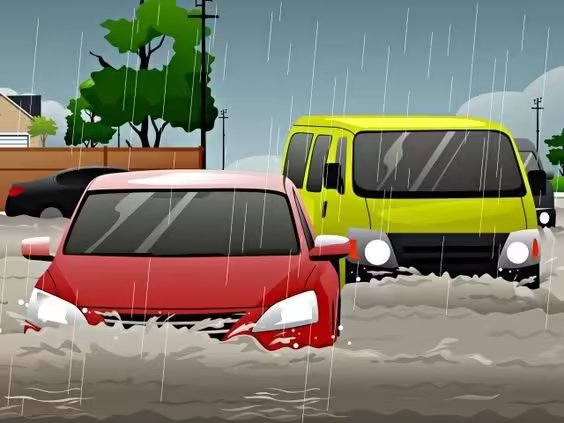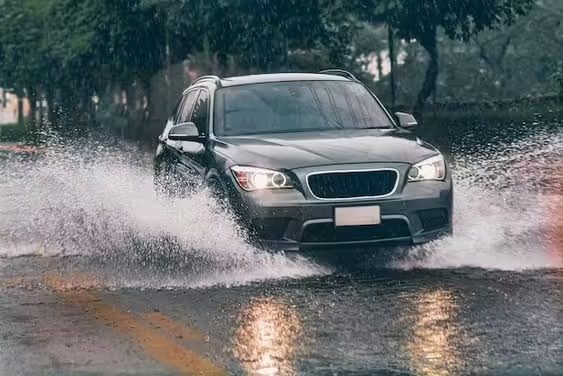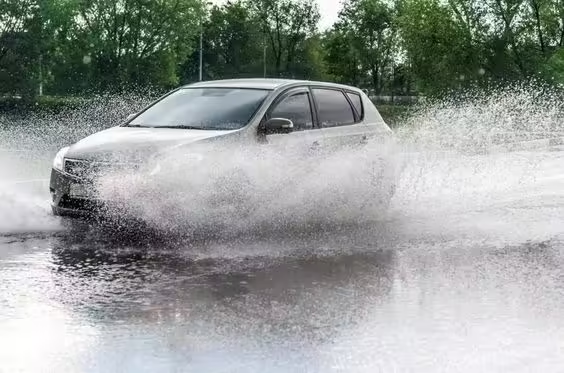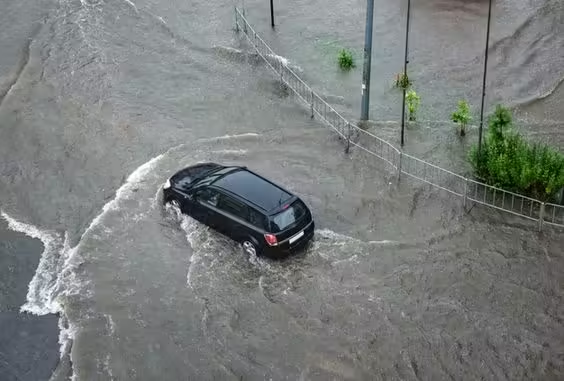
Electric vehicles (EVs) are becoming increasingly popular due to their eco-friendliness, cost efficiency, and technological advancements. However, one of the common concerns among potential and current EV owners is the question of whether EVs can safely drive through water, especially in heavy rain or flooding scenarios. This blog post will explore how EVs handle water, the safety measures in place, and some best practices to ensure your EV remains safe when encountering water.

Understanding EVs and Water Resistance
One of the first things to understand about EVs is how they differ from traditional internal combustion engine (ICE) vehicles. Unlike ICE cars, which have multiple air intakes, exhausts, and other components that can be vulnerable to water ingress, EVs are designed with an enclosed electric powertrain system. This design inherently offers better protection against water.
Key components of an EV that are affected by water:
- Battery Pack: The battery pack is usually located at the bottom of the car and is the primary power source for an EV. These battery packs are sealed in watertight enclosures to protect them from the elements, including water.
- Electric Motors: Electric motors are also sealed and designed to resist water ingress. Unlike ICE engines, which need air intake for combustion, electric motors operate in a completely sealed environment.
- High-Voltage Wiring: EVs use high-voltage wiring to transfer power from the battery to the motors. These cables are well-insulated and designed to prevent water ingress.

Safety Features in EVs to Handle Water
Manufacturers have incorporated various safety features into EVs to ensure they can handle water exposure:
- IP Ratings (Ingress Protection): Most EV components, especially the battery and motor, have high IP ratings. The IP rating indicates the level of protection against solid objects and liquids. For instance, a common rating for EV components is IP67, meaning the component is dust-tight and can be submerged in up to 1 meter of water for 30 minutes without damage.
- Sealed Battery Packs: The battery packs in EVs are sealed with gaskets and other sealing methods to prevent water from entering. This sealing is critical, as water intrusion into the battery can lead to short circuits or other electrical issues.
- Electrical Isolation: EVs have advanced electrical isolation systems that continuously monitor the integrity of the vehicle’s electrical system. If a fault is detected, the system will automatically shut down the power to prevent electrical hazards.
- Smart Sensors: EVs are equipped with various sensors that can detect water levels and automatically adjust the vehicle’s response. For example, if the car detects high water levels, it may limit the power output to prevent damage.

Can You Drive an EV Through Water?
Yes, EVs can drive through water, but with some limitations similar to any vehicle. The level of water an EV can handle depends on the design and waterproofing measures taken by the manufacturer. Most EVs can safely drive through shallow water, such as heavy rain or small puddles, without any issues. However, the risks increase with deeper water, just as with ICE vehicles.
Scenarios to Consider:
- Shallow Water: EVs can generally handle shallow water, such as light flooding or waterlogged streets. The sealed battery and motor components prevent water damage during short exposures.
- Moderate Water Depth: For deeper water, such as when driving through a flooded street, the risk increases. The EV might manage to drive through moderate water levels (up to the bottom of the doors), but this is not recommended. Manufacturers often provide guidelines on maximum water wading depths in the vehicle manual, which should always be followed.
- Deep Water or Submersion: Driving an EV through deep water, where the water level reaches the battery pack or the interior of the vehicle, is highly discouraged. While the battery and motors are sealed, water can still seep into other parts, leading to electrical faults or even vehicle shutdown.
Risks of Driving an EV Through Water
- Short Circuits: While the EV’s electrical systems are well-protected, prolonged exposure to water can cause short circuits in wiring or connectors that are not as well-sealed.
- Battery Damage: The battery pack is sealed, but seals can wear out over time. Water intrusion into the battery can cause severe damage, reducing the battery’s lifespan or, in rare cases, causing it to catch fire.
- Corrosion: Even if water doesn’t enter critical components, exposure to water can cause corrosion over time, especially if the water contains salt, chemicals, or other contaminants.
- Loss of Control: Water can cause loss of traction, leading to skidding or aquaplaning. This risk applies to all vehicles, not just EVs, and is a primary reason to avoid driving through flooded areas.
Best Practices for Driving Your EV in Wet Conditions
- Check Manufacturer Guidelines: Always refer to your EV’s manual for specific water-wading limits. Some EVs have better water resistance than others, and it’s essential to know your vehicle’s capabilities.
- Avoid Deep Water: It’s best to avoid driving through water deeper than your EV’s recommended limits. If you’re unsure, err on the side of caution and find an alternative route.
- Slow Down: If you must drive through water, reduce your speed to minimize water splashing and prevent water from entering critical areas.
- Inspect Your Vehicle After Water Exposure: After driving through water, inspect your EV for any signs of damage or unusual behavior. Pay special attention to warning lights on the dashboard.
- Regular Maintenance: Ensure your EV is regularly serviced, and any worn seals or components are replaced promptly. Regular maintenance helps keep your vehicle in top shape, especially for water resistance.

Conclusion
EVs are generally safe to drive in wet conditions, thanks to their advanced water-resistant design and safety features. However, like all vehicles, they have their limits. Understanding these limits and practicing safe driving habits in wet conditions can help you enjoy your EV worry-free. Always refer to your vehicle’s manual for specific guidelines, and when in doubt, avoid driving through water altogether. Your EV is a technological marvel, but respecting its capabilities and limitations will ensure it remains a reliable companion on the road.
Whether you’re a new EV owner or considering making the switch, knowing how your vehicle handles various conditions is key to maximizing its performance and longevity. So next time you find yourself navigating through a downpour, remember: your EV is designed to withstand the elements, but safe driving is always in your hands.

Leave a Reply